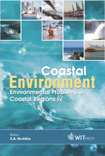The Restoration Of Tidal Marsh Hydrology
Price
Free (open access)
Transaction
Volume
58
Pages
Published
2002
Size
738 kb
Paper DOI
10.2495/CENV020041
Copyright
WIT Press
Author(s)
F A Montalto, T Steenhuis & J Y Parlange
Abstract
There has been extensive wetland destruction throughout the world. Efforts at restoration have met with mixed results. To improve success rates, an analytical tidal marsh hydrology model was developed to investigate the causal relationship between a limited set of edaphic, tidal, topographic and climatological factors in determining the spatial and temporal subsurface hydrology characteristics of wetlands. While the model can be used to simulate the hydrology of many different types of wetlands, here it is used to demonstrate how various physical parameters affect the hydrology of tidal marshes. The results of a sensitivity analysis on the model demonstrate the importance of site morphology, substrate transmissivity, and porosity as the primary determinants of tidal marsh hydrology patterns. Because restoration practitioners have an opportunity to specify these characteristics when they develop restoration designs for a given site, specific management and restoration ideas are also presented. 1 Introduction In both developed and developing countries around the world wetland losses have been great, an alarming trend considering the historical role that wetlands have played in the development and sustenance of human civilization [l]. In North America, it has been estimated that during the last three centuries alone economic development is responsible for the destruction or impairment of approximately 53% of the estimated pre-colonial continental wetland coverage [2]. In densely populated coastal regions, losses have been even greater. For example, in New York City, the US Fish and Wildlife Service estimated in 1997 that approximately 300,000 acres of tidal wetlands and underwater lands have been filled [3], and that 75% of historical wetlands in NYMJ Harbor Estuary have disappeared in the last century alone [4].
Keywords





